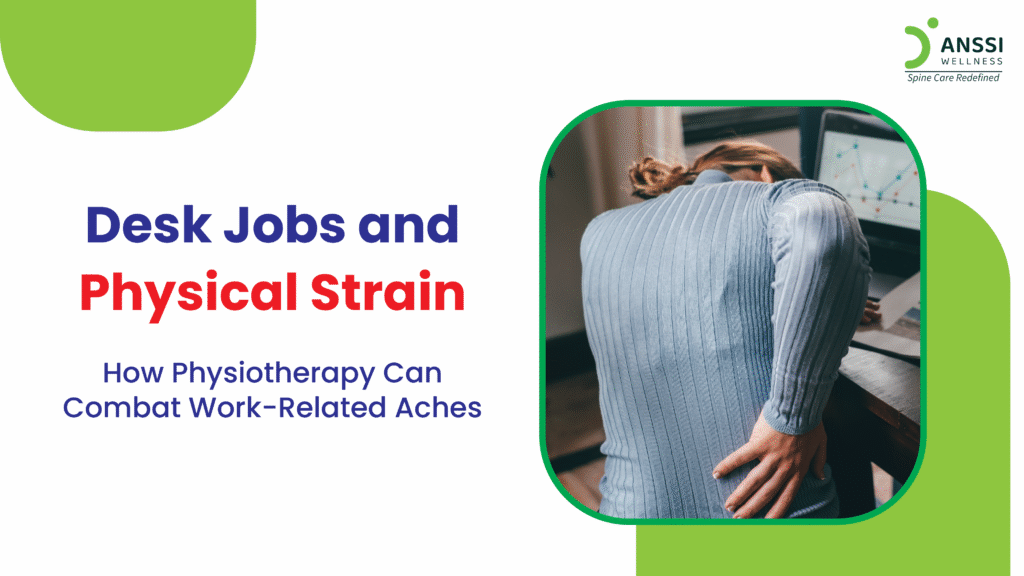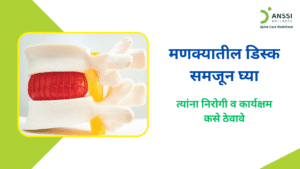In today’s digital era, desk jobs have become the norm for millions of professionals. While these roles offer convenience and stability, they often come at a cost. Many suffer from physical discomfort caused by prolonged sitting, poor posture, and repetitive movements. Over time, these habits can lead to chronic neck pain, backaches, wrist problems, and more.
Thankfully, physiotherapy offers effective, non-invasive solutions to manage and prevent these issues before they become debilitating.
Understanding Work-Related Physical Strain
Spending 8-10 hours a day seated at a desk may not seem physically demanding, but it can take a serious toll on the body. Common problems include lower back pain, neck stiffness, shoulder tension, and even carpal tunnel syndrome. These discomforts are usually the result of static posture, lack of movement, poorly designed workstations, and prolonged screen time.
Poor ergonomics force the body into unnatural positions. For example, slouching strains the lower back, while craning the neck to look at a screen strains cervical muscles. When this strain is repeated daily, the body starts to develop imbalances, which gradually lead to musculoskeletal disorders (MSDs). Early signs might include discomfort, but if ignored, these can develop into chronic pain conditions.
The Role of Physiotherapy in Pain Management
Physiotherapy is a highly effective method for both preventing and treating work-related physical strain. Unlike medications or surgery, physiotherapy focuses on correcting the root causes of pain through physical methods such as targeted exercises, manual therapy, and lifestyle modification.
A physiotherapist begins with a thorough assessment to understand the patient’s posture, work routine, and physical limitations. Based on this evaluation, they design a customised treatment plan to address specific issues. This could include strengthening weak muscles, releasing tension in overused areas, and retraining the body to adopt healthier movement patterns.
Additionally, physiotherapists often educate patients on ergonomics and posture to prevent the recurrence of the pain. This holistic approach ensures long-term relief and improved workplace productivity.
Posture Correction and Ergonomic Tips
Correct posture is a cornerstone of spinal health. The ideal sitting position involves keeping the spine straight, shoulders relaxed, and feet flat on the ground. Here are some practical tips to improve your workstation and posture:
- Ensure proper lumbar support for your chair to preserve the natural curve of your spine.
- Adjust your screen height so it’s at eye level to avoid craning your neck.
- Keep your elbows close to your body and bent at 90 degrees when typing.
- Ensure your knees are level with your hips, or slightly lower, to reduce lower back stress.
- Reduce twisting or overreaching movements by placing frequently used items within easy reach.
Making these small adjustments can go a long way in preventing long-term damage.
Easy Stretches and Movement Breaks
Movement is essential, especially when your job involves prolonged sitting. Incorporating short, frequent movement breaks can counteract the effects of a sedentary lifestyle.
Here are some easy stretches and exercises to try at your desk:
- Neck Rolls: Slowly rotate your head in a circle to release neck tension.
- Shoulder Shrugs: Lift your shoulders up to your ears and then drop them to relieve tightness.
- Seated Spinal Twists: Sit upright and gently twist your torso to each side to mobilise your spine.
- Wrist Flexor and Extensor Stretches: Stretch your wrists to prevent stiffness from typing.
- Ankle Pumps and Calf Raises: Keep the blood flowing in your lower legs during long periods of sitting.
Aim to take a 5-minute break every hour. Even standing and walking around for a minute can reset your posture and energise your body.
The Long-Term Benefits of Physiotherapy
Committing to physiotherapy and ergonomic wellness not only reduces pain but also enhances your overall well-being.
Some long-term benefits include:
- Improved posture and body alignment
- Increased flexibility and joint mobility
- Reduced risk of developing chronic pain conditions
- Better focus and productivity at work
- Higher energy levels and reduced fatigue
Many clinics also use advanced non-surgical treatments like spinal decompression, which can be especially helpful if back pain becomes severe. These treatments are customised to meet the needs of each patient and are safe and effective.
About ANSSI:
ANSSI Wellness focuses on improving the quality of life for patients suffering from spinal issues, aiming to provide relief where other conventional treatments have failed. Through advanced non-surgical spinal decompression treatment, ANSSI is committed to helping patients avoid surgery and recover in a safe, effective, and compassionate environment.
Connect with ANSSI Wellness on LinkedIn, Instagram, and Facebook for expert guidance.



